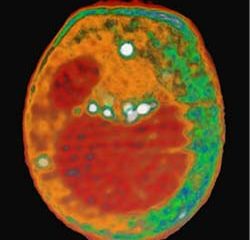Articles and reports from the Life Sciences and chemistry area deal with applied and basic research into modern biology, chemistry and human medicine.
Valuable information can be found on a range of life sciences fields including bacteriology, biochemistry, bionics, bioinformatics, biophysics, biotechnology, genetics, geobotany, human biology, marine biology, microbiology, molecular biology, cellular biology, zoology, bioinorganic chemistry, microchemistry and environmental chemistry.

Researchers identify first gene variant that appears to increase risk of autism in significant portion of the population
Researchers at Mount Sinai School of Medicine are first to strongly link a specific gene with autism. While earlier studies have found rare genetic mutations in single families, a study published in the April issue of the American Journal of Psychiatry is the first to identify a gene that increases susceptibility to autism in a broad population.
Approximat

A first-of-its-kind x-ray microscope being built for the Advanced Light Source (ALS) of the Lawrence Berkeley National Laboratory (Berkeley Lab) holds forth the promise of “cat scans” for biological cells, and other unprecedented capabilities for cell and molecular biology studies. The new microscopy resource also promises a better understanding of human diseases at the molecular level and possibly new discoveries for treating those diseases. Now, researchers with Berkeley Lab and the University of

Research in mice examines how embryo protects itself from oxidative stress
Mouse embryos missing a gene that aids in the repair of DNA damage are at greater risk of developing birth defects, say U of T scientists. The finding has implications for research into the cause of birth defects in humans.
The gene, also found in humans, produces an important protein called ATM which senses DNA damage caused by reactive oxygen species and directs other proteins to repair it. Reactive

Adding a small molecule, dubbed a “molecular midwife,” researchers increased the rate of DNA formation in a chemical reaction 1,000 fold over a similar reaction lacking a midwife. The discovery is an important step in the effort to trace the evolution of life back to the earliest self-replicating molecules. The results are reported in the April 2 edition of the German chemistry journal Angewandte Chemie.
“We are working to uncover how molecules similar to RNA and DNA first appeared on Earth

The United States Department of Energy (DOE) Joint Genome Institute (JGI) and Stanford University report today the completion of the sequencing of human chromosome 19, the most gene-rich of all the human chromosomes. This achievement is described in the April 1, 2004 edition of the journal Nature.
“Culminating 18 years of research, this partnership exemplifies DOE’s commitment to advancing our understanding of the complex interplay between our human health and the environment,” said Energy S

Researchers at Northwestern University have devised a method to induce embryonic stem cells to develop into bone marrow and blood cells. Injecting the stem cells into the bone marrow cavity of mice whose bone marrow cells had been depleted restored production of blood cells, including cells of the immune system, which normally are created in the bone marrow.
As reported by Richard K. Burt, M.D., and colleagues in April issue of The Journal of Experimental Medicine, the method was effective e